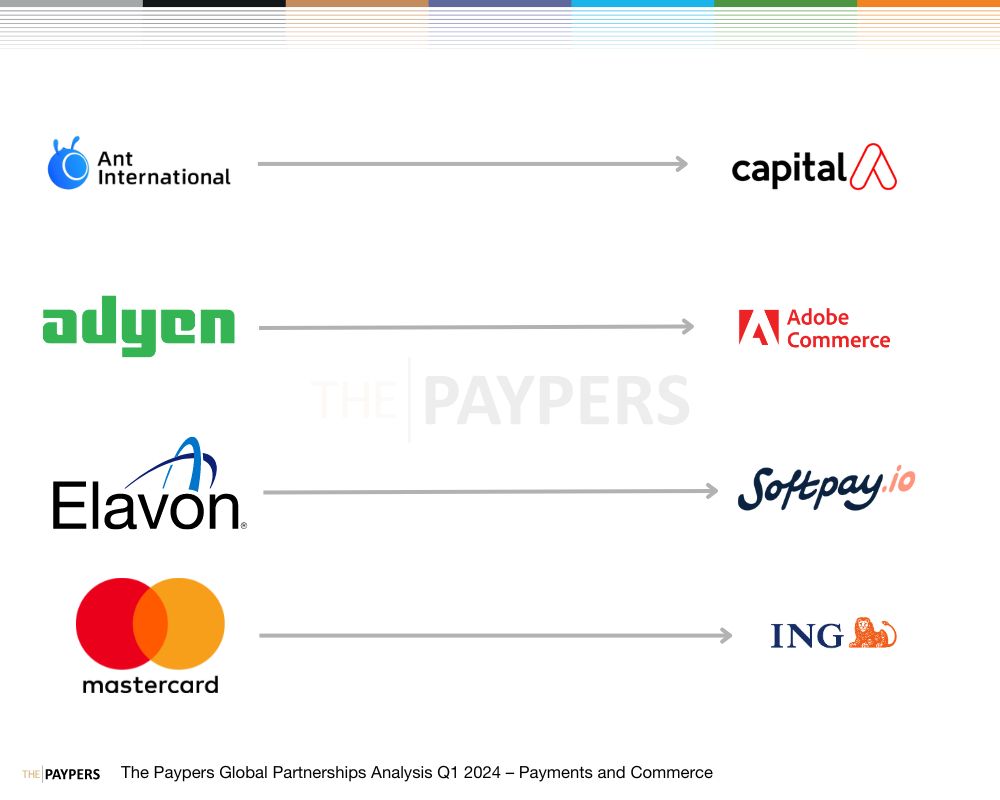Top Global Partnerships: Driving Success in the Modern Business Landscape
In the fast-paced and interconnected world of business, global partnerships play a critical role in fostering growth, expanding reach, and maximizing opportunities. By collaborating with other companies across borders, businesses can access new markets, share resources, and leverage the expertise of their partners. In this article, we will explore the importance of global partnerships, the benefits they bring, and how businesses can strategically form and manage these partnerships for long-term success.

What Are Global Partnerships?
A global partnership is a business collaboration between two or more organizations from different countries. These partnerships are designed to achieve mutual goals and often involve sharing resources, knowledge, or expertise to create a more robust business presence in international markets. Partnerships can take many forms, including joint ventures, strategic alliances, and equity investments, among others.
These partnerships enable companies to overcome geographic, financial, and cultural barriers to expand their global reach. By joining forces, businesses can create synergies that would be difficult to achieve independently.
Types of Global Partnerships
There are several types of global partnerships that companies may engage in, each offering distinct advantages:
-
Strategic Alliances: Agreements between two or more companies to work together for mutual benefit, often without creating a new entity.
-
Joint Ventures: Two or more companies come together to form a new business entity, sharing ownership and control.
-
Licensing and Franchising: One company grants permission to another to use its brand, products, or services in international markets.
-
Equity Partnerships: One company invests in another company in exchange for a stake in its business.
Each of these types has its own set of benefits, risks, and challenges, depending on the goals and structure of the partnership.
Why Global Partnerships Are Essential for Success
In today’s globalized economy, businesses are increasingly relying on global partnerships to stay competitive and expand their influence. The strategic advantages of these partnerships cannot be overstated:
1. Access to New Markets
One of the primary reasons for forming global partnerships is to gain access to new markets. Expanding into foreign markets can be difficult due to regulatory challenges, cultural differences, and high entry costs. Partnering with local businesses allows companies to navigate these challenges and enter new markets with greater ease.
By working with a trusted local partner, businesses can tap into established customer bases, distribution networks, and local expertise. This reduces the risks associated with entering unfamiliar markets.
2. Resource Sharing
Through partnerships, companies can share resources such as technology, manufacturing capabilities, and human capital. This resource sharing can result in cost savings, improved efficiency, and enhanced innovation.
For example, a tech company might partner with a manufacturing firm to produce hardware components, while both companies benefit from improved production processes and reduced operational costs.
3. Enhanced Innovation
Collaboration between businesses from different parts of the world can lead to enhanced innovation. Global partnerships enable companies to pool their expertise and capabilities to create new products, services, or technologies. These innovations can provide a competitive edge and drive growth in both domestic and international markets.
For instance, a partnership between a technology company and a research institution can lead to the development of cutting-edge products that neither entity could have created alone.
4. Risk Mitigation
Entering new markets, launching new products, or investing in unfamiliar industries can be risky. However, forming a global partnership allows businesses to share both the rewards and the risks of these ventures. This reduces the potential financial burden on any one partner.
By sharing the risks associated with international expansion or entering emerging industries, businesses can protect themselves against potential setbacks and create a more resilient strategy.
Key Elements for Successful Global Partnerships
While the benefits of global partnerships are significant, not all partnerships are successful. For a partnership to thrive, certain factors must be in place. Here are the key elements that contribute to the success of global partnerships:
1. Clear Objectives and Expectations
Before entering a global partnership, it is essential to define clear objectives and set mutual expectations. Both parties should be aligned on their goals and the outcomes they expect from the collaboration. Whether the goal is to enter new markets, share technology, or co-develop new products, having a clear understanding of each partner’s role and expectations will ensure smoother collaboration.
2. Effective Communication
Communication is key in any partnership, especially in global collaborations that may involve different languages, cultures, and time zones. Regular and transparent communication ensures that both partners stay on the same page and can address any challenges that arise promptly.
Using modern communication tools, such as collaboration software and automated messaging platforms, can help streamline communication across borders and time zones.

3. Cultural Understanding
Understanding and respecting cultural differences is vital in global partnerships. Different countries have different business practices, work ethics, and communication styles. A successful partnership requires both parties to be adaptable and open to these cultural differences.
For example, in some cultures, building strong personal relationships is a key part of business dealings, while others prioritize efficiency and speed. Being aware of these differences can help prevent misunderstandings and foster stronger cooperation.
4. Shared Vision and Values
A strong global partnership is built on a foundation of shared vision and values. Both parties should have a similar long-term vision for the partnership, as well as a commitment to ethical business practices. This alignment ensures that both partners work toward common goals and are invested in each other’s success.
5. Legal and Regulatory Compliance
Global partnerships must adhere to the legal and regulatory requirements of both parties’ home countries, as well as the countries where the partnership operates. This includes compliance with trade regulations, tax laws, intellectual property rights, and other legal considerations.
Having legal professionals on hand to ensure that the partnership meets all regulatory requirements is crucial for preventing legal disputes down the road.
How Automation Tools Can Enhance Global Partnerships
In today’s digital age, automation tools can play a critical role in enhancing global partnerships. These tools can streamline communication, simplify workflows, and optimize business operations across borders. Here’s how automation tools can help:
1. Streamlining Communication and Collaboration
Automation tools like email marketing platforms, social media management tools, and collaboration software can help businesses stay in constant communication with their partners. These tools enable seamless interactions, even when dealing with multiple time zones and language barriers.
By automating repetitive tasks like sending updates, scheduling meetings, and tracking deliverables, businesses can focus on more strategic activities and foster stronger partnerships.
2. Managing International Transactions
Global partnerships often involve transactions in multiple currencies. Automation tools for payment processing, currency exchange, and invoice management can streamline these processes, reducing errors and saving time. This is particularly important for maintaining smooth cash flow and ensuring timely payments between partners.
3. Data Analysis and Reporting
Automation tools can also help partners analyze data and generate reports on their collaboration. From tracking sales performance to monitoring customer feedback, automated data collection and reporting tools can provide valuable insights that guide decision-making.
By automating data analysis, businesses can make more informed decisions, measure the success of the partnership, and identify areas for improvement.
Conclusion
Global partnerships are essential for businesses looking to expand their reach, innovate, and remain competitive in a rapidly changing world. By understanding the key elements of successful partnerships—such as clear objectives, effective communication, and cultural understanding—businesses can create collaborations that benefit all parties involved.
Moreover, leveraging automation tools can significantly enhance the efficiency and effectiveness of global partnerships, making it easier to manage communication, transactions, and data analysis. With the right strategy and tools, businesses can unlock the full potential of global partnerships and achieve long-term success in the international marketplace.
FAQs
1. What are the main benefits of global partnerships?
Global partnerships offer access to new markets, resource sharing, enhanced innovation, and risk mitigation, making them valuable for businesses seeking growth and expansion.
2. How can cultural differences affect global partnerships?
Cultural differences can impact communication, decision-making, and business practices. Understanding and respecting these differences is essential for maintaining a positive and productive partnership.
3. What role do automation tools play in global partnerships?
Automation tools help streamline communication, manage international transactions, and analyze data, making it easier to manage and enhance global partnerships.
4. How do I find the right partner for a global partnership?
Research potential partners thoroughly, focusing on factors like shared vision, market access, and complementary strengths. A successful partnership is built on mutual trust and aligned goals.
